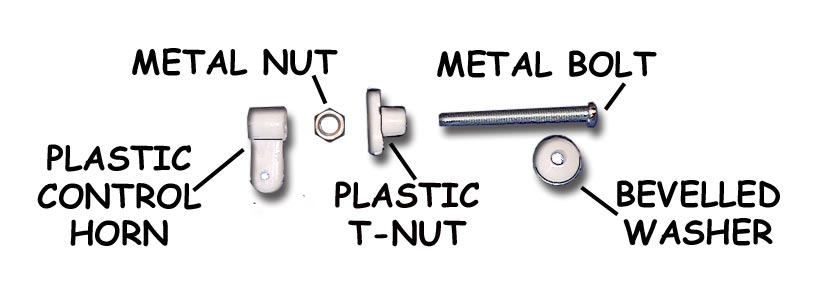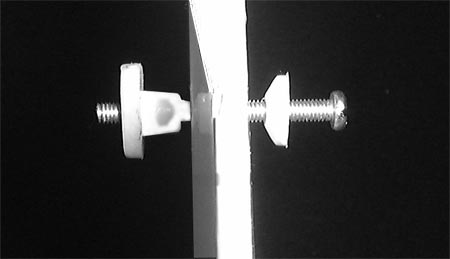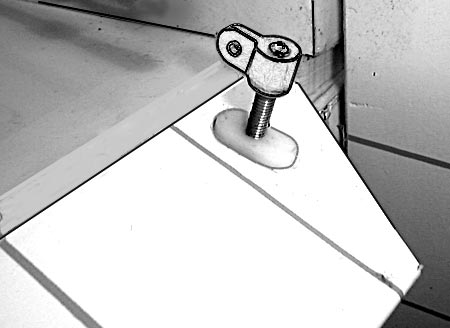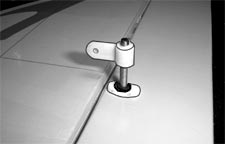Question: How are VMAR control horns installed?
Answer: VMAR control horns are unique. They work better and are easier to install. They do not look like most of the control horns you have seen before and you may not recognize them for what they are or you may think they are missing. They are in the control horn parts bag &/or wing parts bag inside the master bag of hardware and consist of a metal bolt, metal nut, beveled white plastic washer, a white plastic T-nut and the white plastic control horn itself that connects to a clevis or rod.
The iillustration below and to the left shows a control horn set before installation. Note 5 parts make up the set. In Light Duty applications the Metal Nut may not be included and only 4 parts will make up the set. The illustration below and to the right shows a control horn set partially installed. Although illustrations in various manuals show the bevelled washer with the bevel pointing away from the surface we find that we get a cleaner strong installation with the bevel pointing inwards.
We recommend wicking thin CA such as Pacer ZAP/CA (Pink) into the exposed wood surrounding the hole in the control surface. This helps further strengthen the wood. This is not a requirement but if you are pushing the power limits or planning on extreme aerobatics or speeds, the extra strength could come in handy. Use two applications of thin CA 1 minute apart, BEFORE installing the control horn.
 
The illustration below shows horn side view of a control horn set fully installed. The illustration to the left is a lighter duty application without the metal nut. The illustration to the right shows a heavier duty application with the metal nut installed. If the metal nuts have been supplied with the horns, we recommend using them.
 
| 